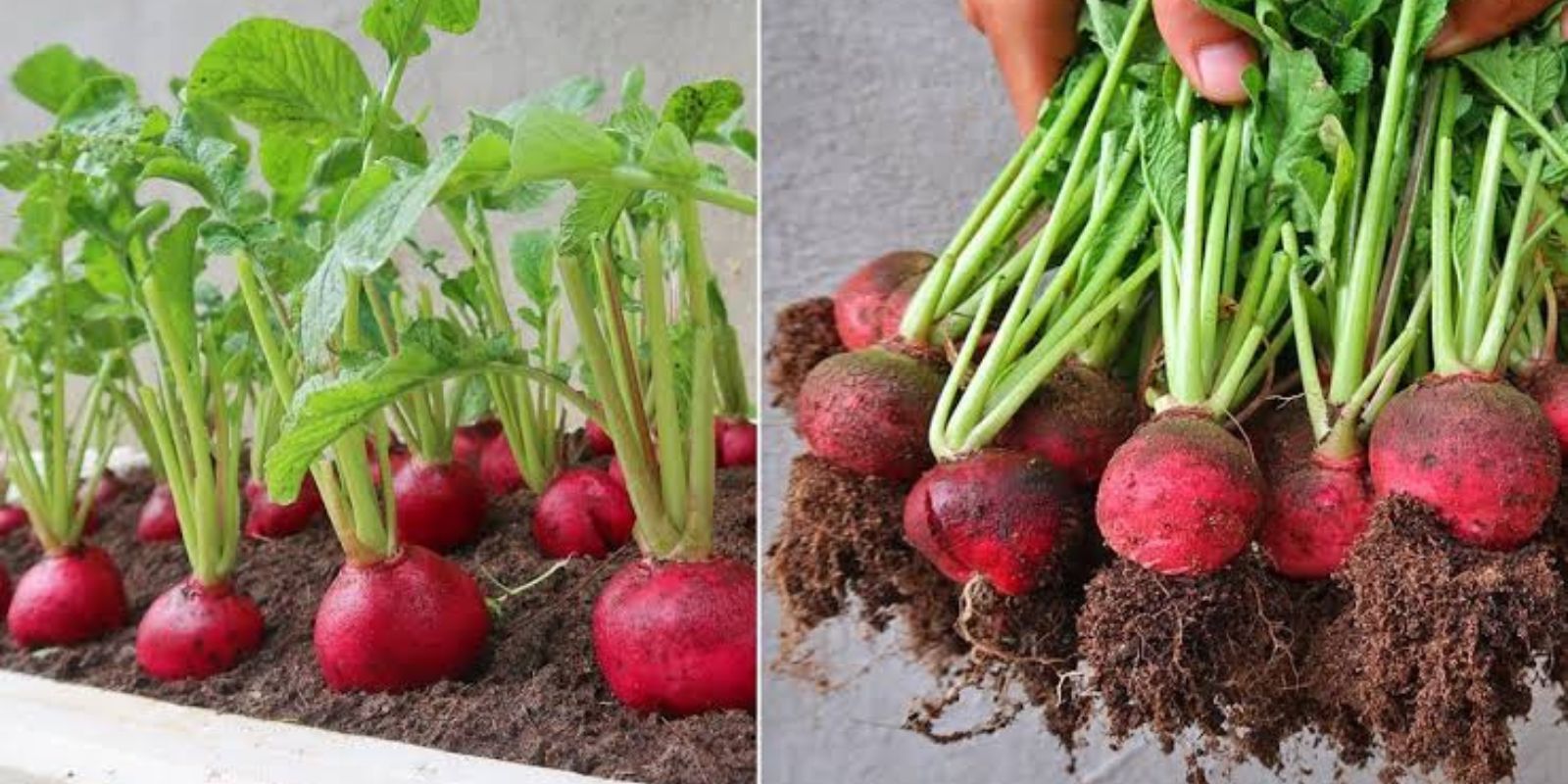Red radishes, with their vibrant hue and peppery crunch, are one of the easiest and most rewarding vegetables to grow. Whether you’re a seasoned gardener or just starting, these fast-growing gems are perfect for adding color and flavor to your meals. Plus, their quick harvest time makes them an excellent choice for those who want near-instant gratification. In this guide, we’ll cover everything you need to know about growing sweet and abundant red radishes—from planting to harvesting and beyond.
Why Grow Red Radishes?
Radishes are often overlooked in the gardening world, but their benefits are undeniable. These root vegetables:
- Grow Quickly: You can harvest them in as little as 21 days.
- Are Nutrient-Rich: Packed with vitamins C and B6, fiber, and antioxidants.
- Are Space-Friendly: Perfect for small gardens or even container gardening.
- Have Multiple Uses: Use them fresh in salads, roasted as a side dish, or pickled for a tangy snack.
Step-by-Step Guide to Growing Red Radishes
1. Choosing the Right Variety
Not all radishes are the same, and the variety you choose can affect your harvest. For classic red radishes, consider:
- Cherry Belle: The standard for radish lovers; mild flavor and fast-growing.
- French Breakfast: Oblong with a slightly sweeter taste.
- Rover: A heat-tolerant option for warmer climates.
2. Preparing the Soil
Red radishes thrive in well-draining, loose soil with a slightly acidic to neutral pH (6.0-7.0). Follow these tips for soil preparation:
- Remove rocks and debris to allow roots to grow freely.
- Mix in compost or organic matter to enrich the soil.
- Avoid high-nitrogen fertilizers, which encourage leaf growth over root development.
3. Planting Radish Seeds
Timing and spacing are critical for a successful radish crop:
- When to Plant: Radishes grow best in cool weather. Plant them in early spring or fall when temperatures range from 50-70°F (10-21°C).
- How to Plant:
- Sow seeds directly in the soil, as radishes don’t transplant well.
- Plant seeds ½ inch deep and 1 inch apart.
- Space rows at least 6 inches apart to give roots ample room to grow.
4. Watering
Consistent moisture is key to growing sweet and tender radishes.
- Water regularly to keep the soil evenly moist, but avoid overwatering to prevent rot.
- Mulch around the plants to retain moisture and regulate soil temperature.
5. Sunlight Requirements
Radishes prefer full sun but can tolerate partial shade, especially in warmer climates. Aim for 6-8 hours of sunlight daily for optimal growth.
6. Thinning the Seedlings
Once seedlings emerge (typically 5-7 days after planting), thin them to 2 inches apart. This prevents overcrowding, which can lead to smaller, misshapen roots.
7. Fertilizing
While radishes don’t require heavy fertilization, a light application of low-nitrogen fertilizer can boost root development. Avoid fertilizers high in nitrogen, as they promote leafy tops at the expense of the edible root.
8. Pest and Disease Management
Radishes are relatively pest-resistant, but keep an eye out for common issues:
- Aphids: Spray with a mixture of water and mild soap.
- Root Maggots: Prevent by using row covers and rotating crops.
- Fungal Diseases: Avoid overwatering and ensure proper spacing for air circulation.
9. Harvesting
The most satisfying part of growing red radishes is the harvest. Here’s how to ensure you pick them at their peak:
- Check for readiness about 3-4 weeks after planting. The top of the root should be visible at the soil line.
- Harvest when radishes are about 1 inch in diameter. Leaving them in the ground too long can result in woody, bitter roots.
- Gently pull them from the soil, being careful not to damage nearby plants.
Post-Harvest Tips
Once harvested, radishes can be stored in the refrigerator for up to two weeks. To keep them fresh:
- Remove the leafy tops, as they draw moisture from the root.
- Store in a sealed plastic bag or container with a damp paper towel to maintain crispness.
Advanced Tips for Growing Red Radishes
Want to take your radish-growing skills to the next level? Try these expert tips:
- Succession Planting: Sow seeds every 10 days for a continuous harvest throughout the season.
- Companion Planting: Grow radishes alongside carrots, lettuce, or cucumbers to maximize space and deter pests.
- Container Gardening: Use pots at least 6 inches deep with drainage holes for a portable radish garden.
- Flavor Boost: Water radishes with diluted compost tea for added nutrients.
Troubleshooting Common Problems
Even the most experienced gardeners encounter challenges. Here’s how to address common radish issues:
- Small or Misshapen Roots: Likely due to overcrowding or poor soil. Thin seedlings and amend the soil.
- Bitter Taste: Caused by heat stress or inconsistent watering. Grow in cooler weather and maintain soil moisture.
- Bolting (Flowering): Occurs in hot temperatures. Harvest radishes promptly and plant in early spring or fall.
Why Red Radishes Are a Must-Have for Every Garden
In addition to being easy to grow, red radishes offer numerous benefits:
- Culinary Versatility: Enjoy them raw, roasted, or pickled. Their spicy flavor pairs well with a variety of dishes.
- Health Benefits: Radishes are low in calories but high in fiber, vitamin C, and antioxidants, making them a nutritious addition to your diet.
- Aesthetic Appeal: Their bright red roots and green foliage add a pop of color to any garden.
Conclusion: Cultivate Sweet Success with Red Radishes
Red radishes are a gardener’s dream—fast-growing, flavorful, and fuss-free. By following the steps outlined in this guide, you can enjoy a bountiful harvest of sweet, crunchy radishes in just a few weeks. Whether you’re growing them in a garden bed, raised planter, or container, these versatile vegetables are sure to impress.
🌱 Ready to start your radish-growing journey? Share your experience or ask questions in the comments below!

